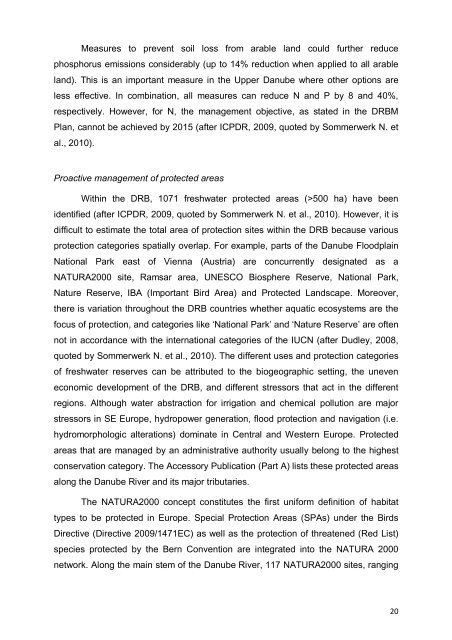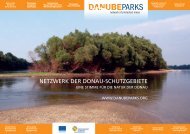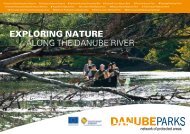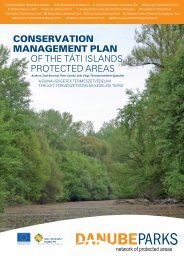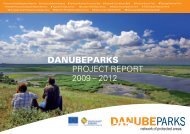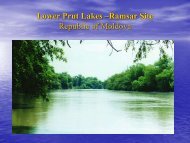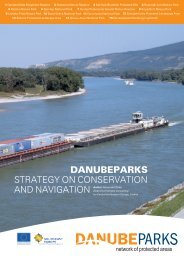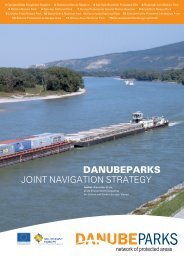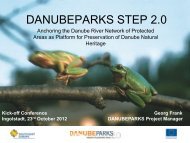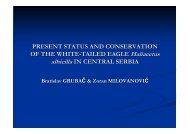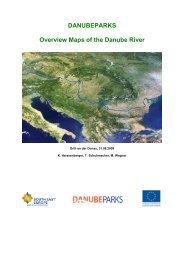Danube Rivers Morphology and Revitalization - DANUBEPARKS
Danube Rivers Morphology and Revitalization - DANUBEPARKS
Danube Rivers Morphology and Revitalization - DANUBEPARKS
Create successful ePaper yourself
Turn your PDF publications into a flip-book with our unique Google optimized e-Paper software.
Measures to prevent soil loss from arable l<strong>and</strong> could further reducephosphorus emissions considerably (up to 14% reduction when applied to all arablel<strong>and</strong>). This is an important measure in the Upper <strong>Danube</strong> where other options areless effective. In combination, all measures can reduce N <strong>and</strong> P by 8 <strong>and</strong> 40%,respectively. However, for N, the management objective, as stated in the DRBMPlan, cannot be achieved by 2015 (after ICPDR, 2009, quoted by Sommerwerk N. etal., 2010).Proactive management of protected areasWithin the DRB, 1071 freshwater protected areas (>500 ha) have beenidentified (after ICPDR, 2009, quoted by Sommerwerk N. et al., 2010). However, it isdifficult to estimate the total area of protection sites within the DRB because variousprotection categories spatially overlap. For example, parts of the <strong>Danube</strong> FloodplainNational Park east of Vienna (Austria) are concurrently designated as aNATURA2000 site, Ramsar area, UNESCO Biosphere Reserve, National Park,Nature Reserve, IBA (Important Bird Area) <strong>and</strong> Protected L<strong>and</strong>scape. Moreover,there is variation throughout the DRB countries whether aquatic ecosystems are thefocus of protection, <strong>and</strong> categories like ‘National Park’ <strong>and</strong> ‘Nature Reserve’ are oftennot in accordance with the international categories of the IUCN (after Dudley, 2008,quoted by Sommerwerk N. et al., 2010). The different uses <strong>and</strong> protection categoriesof freshwater reserves can be attributed to the biogeographic setting, the uneveneconomic development of the DRB, <strong>and</strong> different stressors that act in the differentregions. Although water abstraction for irrigation <strong>and</strong> chemical pollution are majorstressors in SE Europe, hydropower generation, flood protection <strong>and</strong> navigation (i.e.hydromorphologic alterations) dominate in Central <strong>and</strong> Western Europe. Protectedareas that are managed by an administrative authority usually belong to the highestconservation category. The Accessory Publication (Part A) lists these protected areasalong the <strong>Danube</strong> River <strong>and</strong> its major tributaries.The NATURA2000 concept constitutes the first uniform definition of habitattypes to be protected in Europe. Special Protection Areas (SPAs) under the BirdsDirective (Directive 2009/1471EC) as well as the protection of threatened (Red List)species protected by the Bern Convention are integrated into the NATURA 2000network. Along the main stem of the <strong>Danube</strong> River, 117 NATURA2000 sites, ranging20


